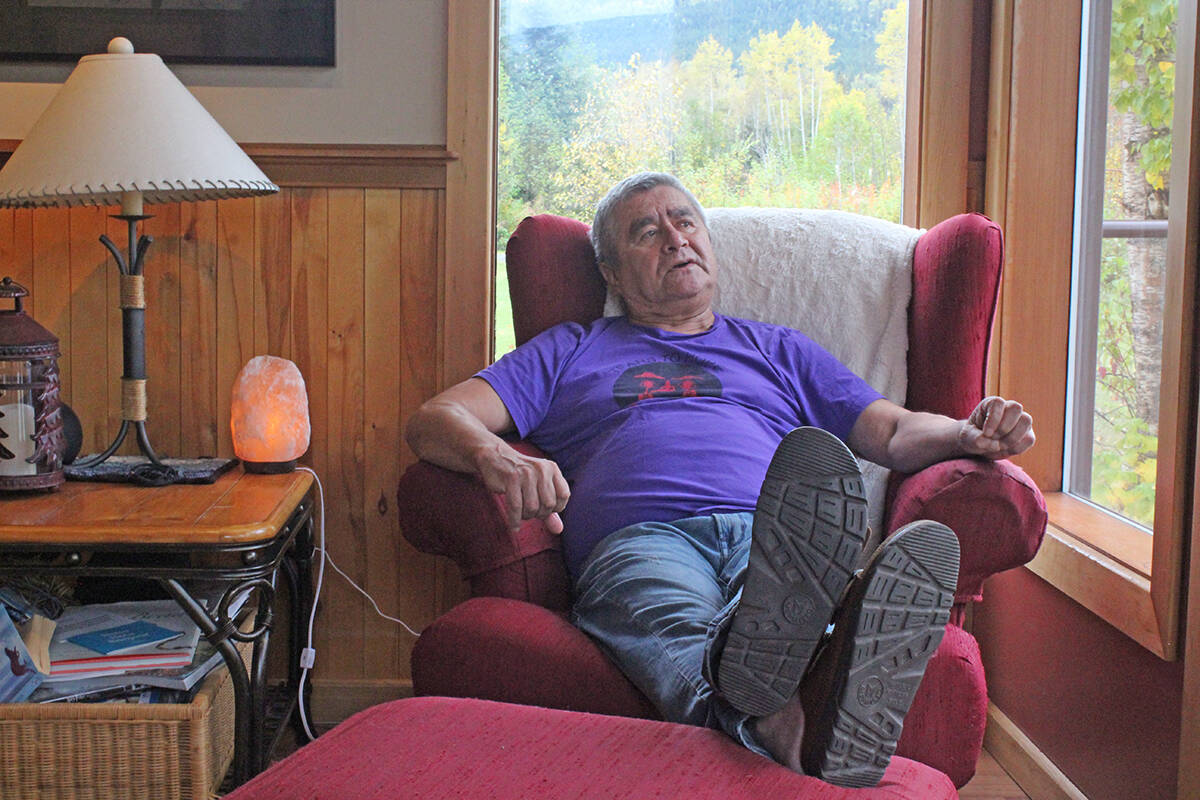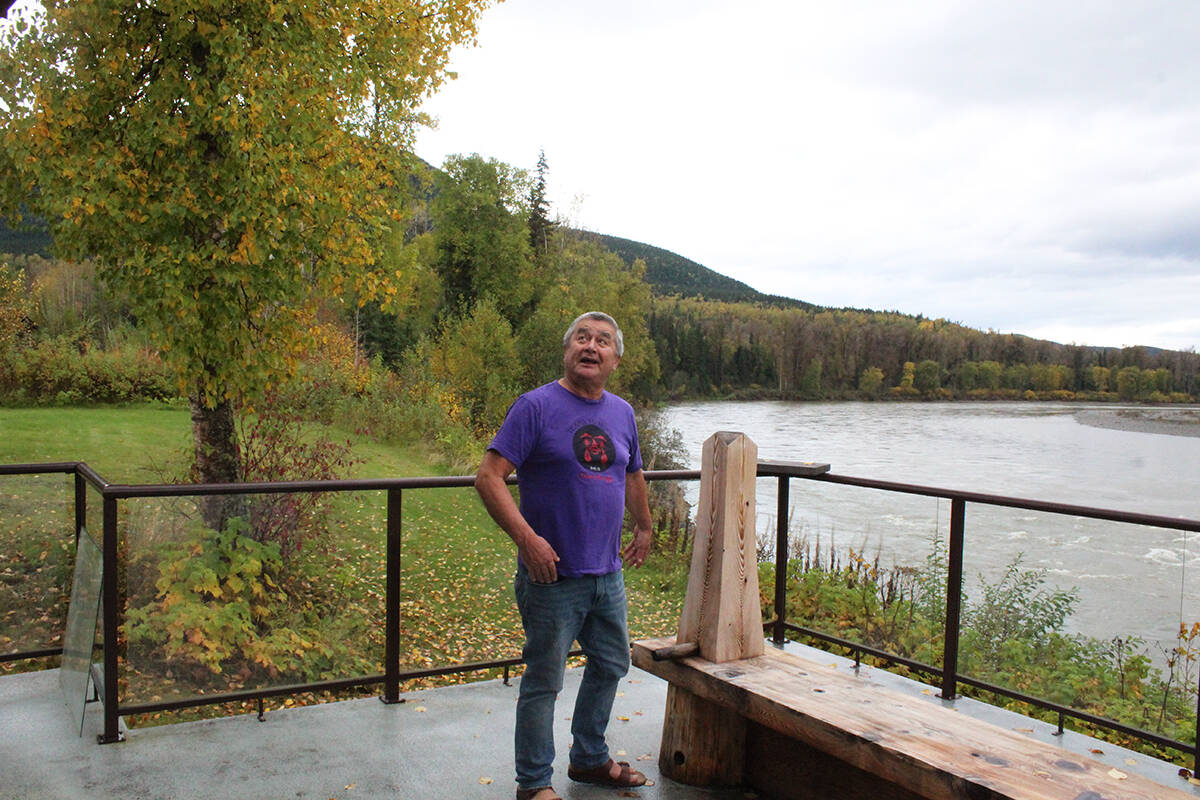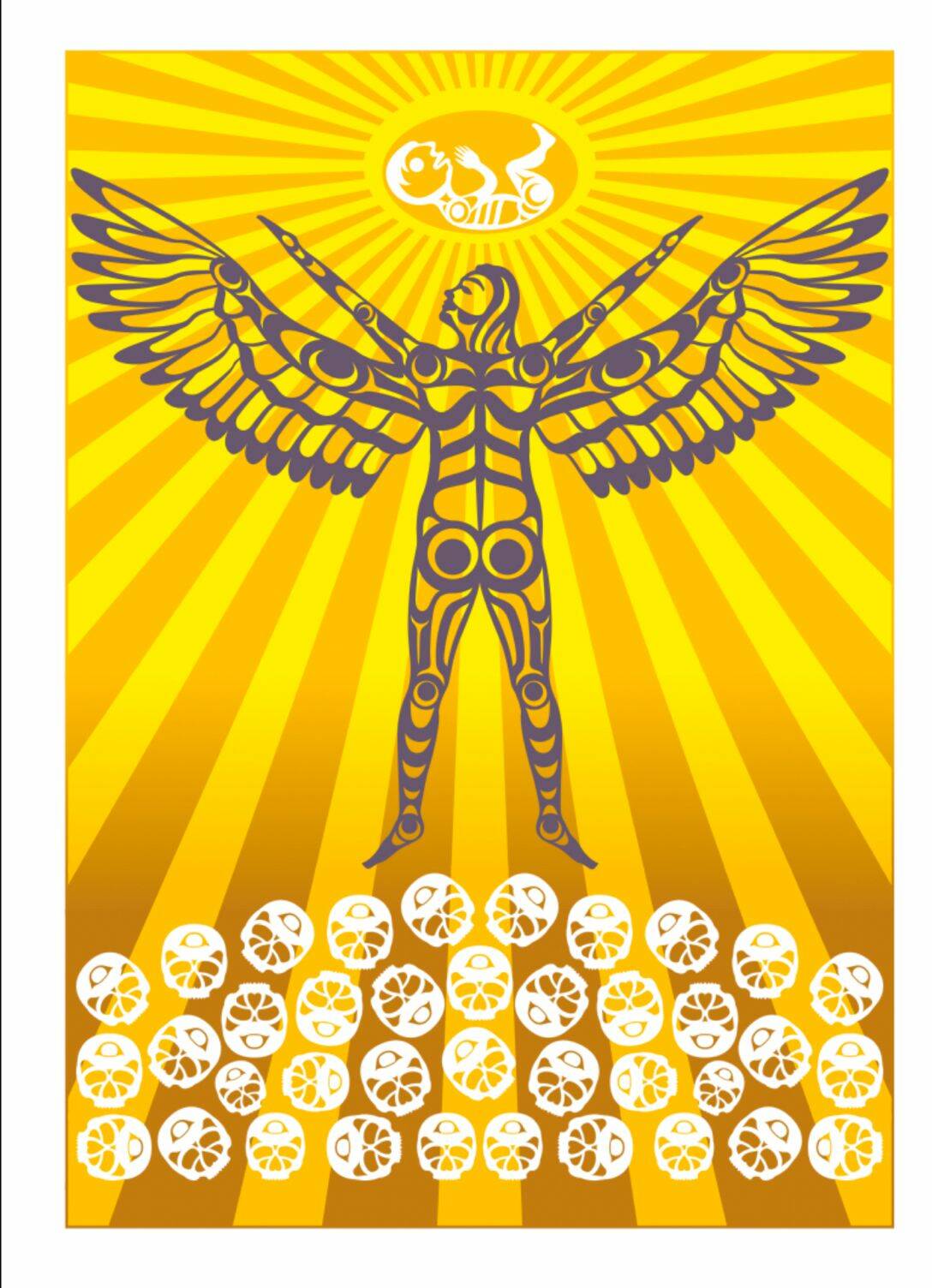When Roy Henry Vickers speaks about his powerful new artwork “They Were Buried in the Night” he chokes up.
“The angel is rising from the skulls of the children who have died, and her arms are uplifted, and there’s new life,” Vickers describes. “And that new life shines on us all. So the rays come from that beautiful little child. And that’s what I see. Healing will bring beauty back to the people, people will reconnect to the land, all of us, because we all live here, new life.”
Vickers hopes the discovery of 215 children in unmarked graves at the former residential school in Kamloops, and the thousands that are sure to follow according to estimates by the Truth and Reconciliation Commission, is a wake-up call to all Canadians.
“For me, the great thing about all of these bodies coming to the mass knowledge of Canadians is, well, maybe now people will begin to hear, and if they begin to hear then there will be compassion because you can’t listen to these stories and not feel them deep down inside if you’re a human being and have a heart and everybody does.
“Once that happens then the compassion of us, as Canadians, for the Indigenous people actually helps to bring about the change for healing and that’s the only thing that’s going to change and that’s for us to heal.”
He also hopes it will lead to some concrete action.
“My dream is, now that we know these bodies are here, they can’t be left there, they should be exhumed, DNA done no matter what cost.
“We just spent the money on a ridiculous election that would have taken care of this whole thing, identify the bodies, return them to their homes. The massive amount of healing that would come from that is priceless, you can’t even put a value in money on that.”
Vickers, a third-generation survivor of the residential school system, has personal experience of the generational trauma imposed by not just the horrors at residential schools, but the decades of silence that followed.
“Whenever we spoke about genocide it was ‘cultural genocide,’ but no it’s a genocide when you look at the number of bodies, mostly murdered, experiments done on them, kids thrown down stairs, girls raped and pregnant and go hang themselves because they can’t stand the shame.
READ MORE: Roy Henry Vickers launches new book
“People came back and they were told they would go to hell if they ever spoke of it once they left school so I heard nothing from my grandmother, from my dad, from any of my uncles and aunts and I went to them directly.
“If we don’t talk about it, how is anything going to change and how am I to know why my dad’s behaviour is as it is unless I know what happened to him, so it’s generations of unresolved trauma.
“Now we’re at a point that the inside rage and anger of those who suffered to the end of their lives, most of them because there was no one to help them deal with the trauma, and people wonder why there is so much addiction among Indigenous people.”
Vickers has been there himself, in a place where the rage, suffering and addiction almost led him to suicide.
“At 45 years of age on Valentine’s Day, I hit the end of my rope for the last time, I thought, and I was going to put a bullet in my brain like so many have, but fortunately I was taught that life is a gift and you do not have the right to end it.
“So, I only had one choice, as Bob Dylan says, I have to change my way of thinking, make a different set of rules.
“It’s been two decades of moving through the trauma and constantly having to go back and look at it again and seeing it come up again and deal with it again and that’s the way it is when you’re healing and if you’re not healing then you’re just in this hopeless, dark, angry, shameful place and nobody wants to hear you.”
Now, he speaks through his art.
READ MORE: Businesses, schools and cities observing National Day for Truth and Reconciliation
“My pictures are worth a thousand words, look at my pictures if you want to know hear what I have to say.”
Vickers was not impressed by the federal government making Sept. 30 a statutory holiday called the National Day of Truth and Reconciliation, feeling like it smacks of the same old patriarchal colonialism of the past.
“The reconciliation the government talks about is bringing Indigenous people back to this beautiful relationship they had with the government. There wasn’t one. They were oppressors from day one. We were people who were in the way of the settlers.
“There’s nothing to reconcile from that standpoint, but spiritually and soulfully, there is something to reconcile. But the leaders can’t see that. They don’t. They don’t even know what I’m talking about.”
But while he has little patience for politicians, he has a little more faith in the Canadian public.
“I think it should be a national day of mourning for Indigenous people, not truth and reconciliation.
“If it is treated like that, by Canada as a nation, that would be incredible. And I know it will be. That’s the way it’ll be looked on by Indigenous people across this country. And we have a national day. Not Aboriginal day, but a national day of mourning.
“And it’s time.”
Prints of “They Were Buried in the Night” will be available through the Roy Vickers Gallery in the near future. Next year, Vickers plans to paint a 90-foot wall of skulls in Terrace.
editor@interior-news.comLike us on Facebook and follow us on Twitter



